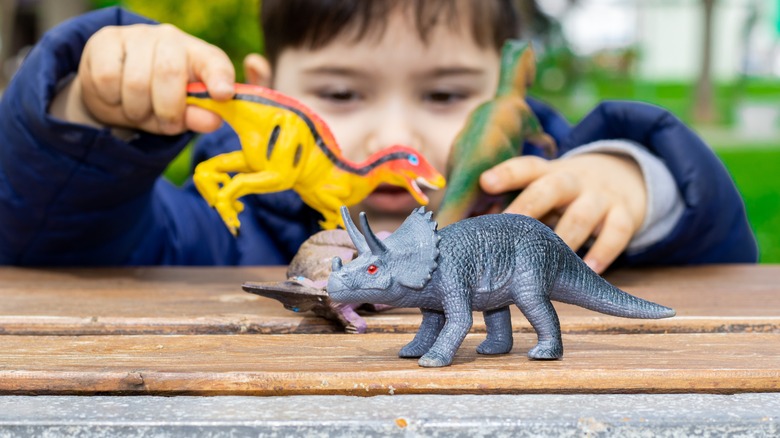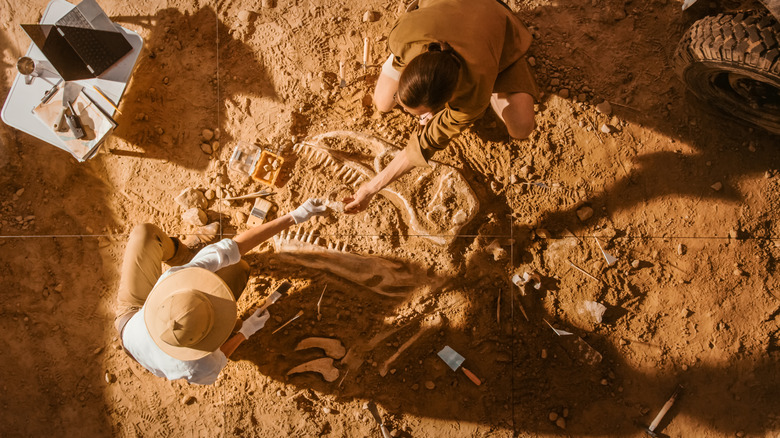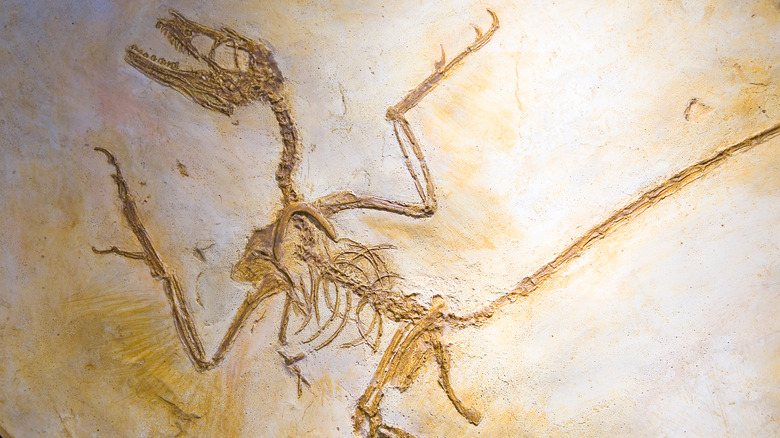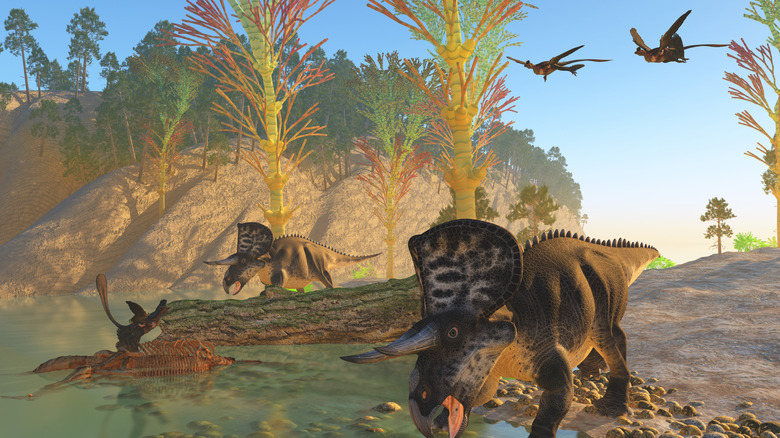The Tiny Discovery With A Huge Impact On How We View The Diets Of Dinosaurs
We're fortunate to share our world with an enormous and diverse range of creatures. From the most gigantic blue whale to the smallest and most seemingly insignificant insect, they're just going about their curious lives just as we are.
What do we know about these lives? Quite a lot in many cases, thanks to the efforts of dedicated scientists, zoologists, conservationists and other animal-lovers around the world. Lions, for instance, are carnivores, and ravenous ones at that: per ALERT, adult males devour about seven kilograms (around 15.4 pounds) every day.
We have the advantage, of course, of being able to study live lions, to feed them, to witness them hunting their prey in harrowing documentary moments. With the meat-eaters of prehistory, such as some dinosaur species, that ship sailed millions of years ago. Scientists, nonetheless, can piece together a picture of extinct animals' diets too. Sometimes, though, the smallest of discoveries can change that picture in an instant. Here's how a teeny dinosaur and its even teenier meal proved revolutionary.
How Dinosaurs Fossilize
As the Natural History Museum explains, dinosaur fossils are incredibly rare. After millions of years, their bodies will tend to have been broken down into nothing. We have the fortunate insight we do because some of them were conveniently located enough on death to be covered by several layers of sediment as they decomposed. In this way, they are found today, now sedimentary rock. As Dr. David Button of the establishment itself put it, "Most of the dinosaur fossils we find are from animals that were living near to a lake or river ... We don't know about many dinosaurs that lived in jungle or mountain environments. Fossils are very unlikely to form in such situations."
Naturally, paleontologists discover dinosaur fossils that run the gamut when it comes to preservation quality. Very few are almost complete and in remarkable condition. These would, however, be the ones that provide the most (potential) information for experts, as there is more of the creature's body to live on.
Sometimes, just sometimes, a find comes along that defies the odds and its millions of years of age to give us new insight into the prehistoric world. Such a case occurred in December 2022, per CNN. It seems that the remains of a mammal were found in the remains of a small raptor's stomach. Not only must experts rethink what they understood to be on these creatures' menu, but the implications for the ecosystem as a whole are fascinating too.
A micro-mammal, but a massive discovery
The study "Generalist diet of Microraptor zhaoianus included mammals," from David W. E. Hone et al, was published in the Journal of Vertebrate Paleontology in December 2022 (per Taylor & Francis Online). It discusses the sheer rarity of getting a peek into a dinosaur's diet (literally, into its stomach). It can be difficult enough to identify the predator, let alone the prey they've been feasting on. When this does happen, though, it provides a veritable treasure trove of information. "Gut contents are extremely important for inferring trophic interactions between extinct species," as the researchers put it.
Microraptor zhaoianus, as its name might suggest, was a particularly small species. Around the size of today's average pigeon or crow, per USA Today, it lived during the Cretaceous Period around 120 million years ago. Within the ribcage of this seemingly unspectacular little species, the study goes on, the remnants of the foot of a teeny mammal were found and confirmed as such.
Said ribcage was preserved well enough, but the bones of the mammal therein boasted the telltale traits of being from a mammal, and there was doubt that it was the microraptor's dinner: "The foot overlies the medial surfaces of the left ribs and is overlain by ribs from the right side," the study reports, "demonstrating this foot was contained within an articulated thoracic cavity."
Its varied diet could have great implications
Of course, there's no telling how often Microraptor zhaoianus ate mammals, or how significant a part of its diet they were. We now know that they did, though, and that's sensational enough in and of itself.
Firstly, it's so very unusual to find such stomach contents in the first place. McGill University states that this particular specimen was only the twenty-first ever to have been found with its food preserved like this. Per "Generalist diet of Microraptor zhaoianus included mammals" (via Taylor & Francis Online), this species was also known to have eaten the likes of lizards and fish, but this mammal now adds another item to its menu. "Some small carnivorous theropods may have consumed plant matter on occasion," the study concludes, but this particular species "was probably a generalist carnivore that mostly ate small vertebrates."
Per McGill University, we've never had (possible) proof of a dinosaur carnivore with such a diet before. Such animals have valuable roles today (foxes being one example, CNN states), and they can continue to play them even if one particular food source becomes scarce. Microraptor zhaoianus, then, may have been small in stature, but it could have been monumental in terms of its effect on its ecosystem as a whole. So, too, could other dinosaurs, opening up yet another avenue of paleontological study.



